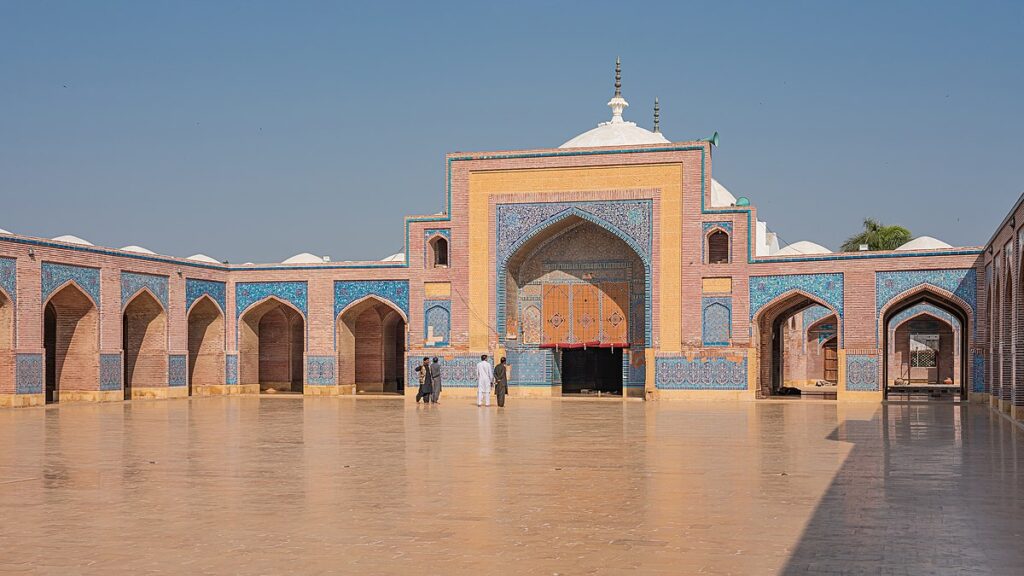
Mughal art has played a great role in revolutionizing the architecture world. Among the famous architectures found in Pakistan, one piece of Shah Jahan’s taste still stands tall. Thatta, one of the oldest cities in Pakistan, is home to Shah Jahan Mosque, also known as the Jamia Masjid of Thatta.
Constructed as a gift to the people of Sindh, the mosque is one of the major contributions to ever exist in the world today. Also, with the extensive tile work to the exclusive design of geometric patterns, Jamia Masjid is one of the world’s largest mosques with 93 domes.
The City of Thatta and Shah Jahan
This old city of Pakistan has undergone some major rulers and emperors in the past, including the Mughal Kingdom. The variety of rules and their culture shaped the norms and traditions of the city.
Thatta is famous for its diverse culture. It is one of the most prominent Mughal architectures ever to exist. When Shah Jahan rebelled against his father, Emperor Jahangir, he sought refuge in Sindh. Therefore, the hospitality of Sindh’s people was the primary reason behind the magnificent structure.
Some historians believe that Shah Jahan paid for the mosque’s construction from his imperial coffers. Due to large flooding In 1637, Thatta became almost extinct. Nothing was intact insight. Perhaps it is another reason behind the mosque’s popularity too.
The Origins of Shah Jahan Mosque
Built in the 17th century, it served the purpose of a central mosque in Thatta. Shah Jahan bestowed the mosque to the city as a token of gratitude. Moreover, Jamia Masjid is known for its peculiar tile work and is famous for the most elaborate design ever in South Asia.
Some of the repairs took place under the rule of Emperor Alamgir afterward. Murad Ali Khan Talpur (a local chieftain) oversaw most of the repairs between 1692 and 1812. During the British control, further renovations took place in 1855 and 1894. However, it was not until the 1960s and 1970s that the final restoration was accomplished.
Thatta was the capital of Sindh at the time of construction of the mosque. It is located near Makli Necropolis, another UNESCO World Heritage Site. The site of the mosque is almost 100 kilometers from Karachi.
Style of Shah Jahan Mosque
The design and architectural style of Jamia Masjid were influenced mainly by Turkic and Persian culture. It is a glorious example of extensive brickwork. Likewise in most Persian-style architecture, blue tiles can be seen in the exterior and interior walls. Some historians even claim that Timurid’s architecture affected the style of architecture. The mosque itself is one of the precedent building styles of the Tarkhans (previous rulers of Sindh). The Safavid style placement of tiles and bricks are prominent features of the Jamia Mosque.

Use of Variety of Building Materials
Shah Jahan’s most prized possessions were his architecture, including Jamia Masjid. The beautiful architecture is composed of red bricks and blue-colored glossy tiles. The brightly colored tiles came from the Sindh village of Hala.
The mosque was built with acoustic considerations in mind. It was possible to hear what was spoken within one of the domes on the other end.
Construction of the Jamia Masjid
Like every other Mughal architecture, Jamia Masjid also has a heavy brick structure. The construction is simple and built on a stone plinth. It has heavy square pillars with massive walls.
The prayer chamber is almost similar in size to (169″ x 97″).
The famous blue tiles, in complex designs, are used to cover the two main halls. The hints of white give a unique look from the outside. Tiles consist of creative floral patterns – a work of 17th century Kash (Iran). The main spandrels of the prominent arches in north and south galleries are prime examples. Geometrical designs on tiles can also be seen on the interior walls.
The eastern wing of the building was complex in design. During the era of Mughal Emperor Aurangzeb, the final construction took place in 1659. It’s not surprising to see the use of extensive brickwork in the architecture of the mosque.
Outskirts of Jamia Masjid
Vast skirts of lawn, garden, and footpath surround the Jamia mosque. Tourists can visit only one side of the mosque devoted wholly for recreational areas.
Known facts about Jamia Masjid
The direction of mihrab (markings on a mosque’s wall that indicates Mecca) was wrongly aligned. It was a severe mistake. Therefore an overnight action involved the mihrab’s replacement.
People sought out a Sufi mystic, Makdum Nooh. With his guidance, they solved the problem without any further troubles.
However, according to the practical world, they rebuilt the mihrab and aligned it correctly after the finishing of mosque’s construction.
Hence, the building is famous for its unique ethnic architectural style, which makes it mesmerizing.
The open layout of the mosque and its grand size play a partial role in its popularity too. The main prayer hall I situated in the middle of the mosque (in the west). The central courtyard is rectangular and has four iwans. Each portal faces a distinct cardinal direction. Due to different directions, the galleries consist of 33 arches.
The use of turquoise and blue tiles and magenta tile work are other popular pieces of construction. Moreover, its rainbow patterns of blue, white, red, and yellow drive the stunning aura of the sky with the perfect sunset. Beautiful Arabic calligraphy adorns the mosque’s walls.
Conclusion
In a word, the Shah Jahan mosque is a unique and rare extravaganza for the people of Thatta. If you visit Sindh any time of the year, you will not be disappointed by Shah Jahan’s mosque in Thatta. Besides, it is a supreme example of one of the most delicate pieces of architecture and art in Pakistan’s history. Make sure to stop by Jamia Mosque to create unforgettable memories.
